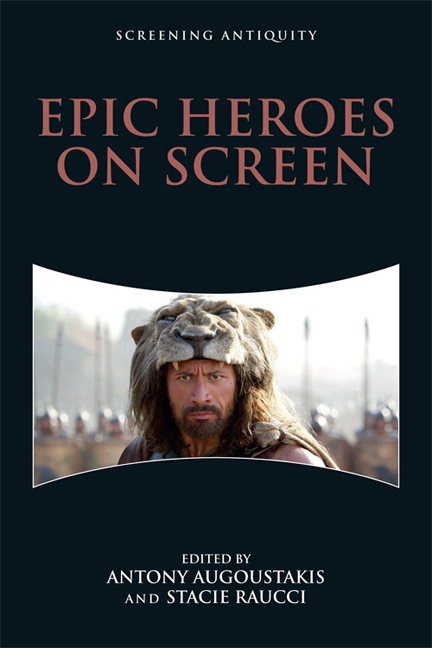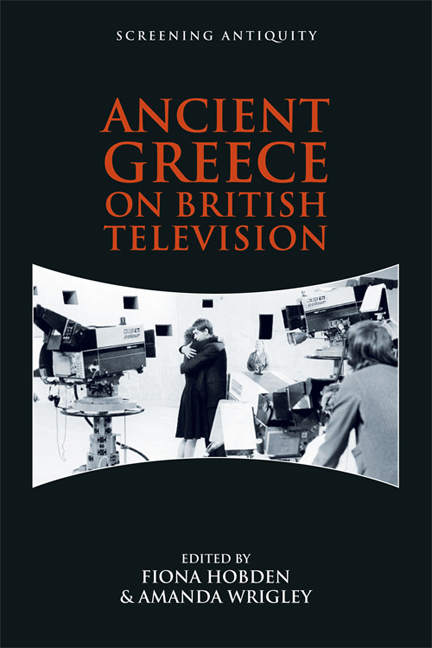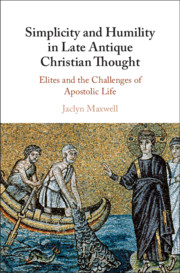Refine search
Actions for selected content:
23990 results in Ancient history
Contents
-
- Book:
- The Roman Republic to 49 BCE
- Published online:
- 22 June 2021
- Print publication:
- 06 May 2021, pp ix-x
-
- Chapter
- Export citation
Index
-
- Book:
- The Roman Republic to 49 BCE
- Published online:
- 22 June 2021
- Print publication:
- 06 May 2021, pp 266-274
-
- Chapter
- Export citation
Learning More
-
- Book:
- The Roman Republic to 49 BCE
- Published online:
- 22 June 2021
- Print publication:
- 06 May 2021, pp 203-206
-
- Chapter
- Export citation
Acknowledgements
-
- Book:
- The Cult of Castor and Pollux in Ancient Rome
- Published online:
- 08 May 2021
- Print publication:
- 29 April 2021, pp xi-xii
-
- Chapter
- Export citation
Introduction
-
- Book:
- The Cult of Castor and Pollux in Ancient Rome
- Published online:
- 08 May 2021
- Print publication:
- 29 April 2021, pp 1-28
-
- Chapter
- Export citation
3 - The Responsibilities of Castor and Pollux
-
- Book:
- The Cult of Castor and Pollux in Ancient Rome
- Published online:
- 08 May 2021
- Print publication:
- 29 April 2021, pp 113-144
-
- Chapter
- Export citation
2 - The Epiphanies of the Dioscuri
-
- Book:
- The Cult of Castor and Pollux in Ancient Rome
- Published online:
- 08 May 2021
- Print publication:
- 29 April 2021, pp 74-112
-
- Chapter
- Export citation
Translations and Abbreviations
-
- Book:
- The Cult of Castor and Pollux in Ancient Rome
- Published online:
- 08 May 2021
- Print publication:
- 29 April 2021, pp ix-x
-
- Chapter
- Export citation
Bibliography
-
- Book:
- The Cult of Castor and Pollux in Ancient Rome
- Published online:
- 08 May 2021
- Print publication:
- 29 April 2021, pp 198-220
-
- Chapter
- Export citation
Copyright page
-
- Book:
- The Cult of Castor and Pollux in Ancient Rome
- Published online:
- 08 May 2021
- Print publication:
- 29 April 2021, pp iv-iv
-
- Chapter
- Export citation
4 - Castor and Pollux as Parallels for Imperial Heirs
-
- Book:
- The Cult of Castor and Pollux in Ancient Rome
- Published online:
- 08 May 2021
- Print publication:
- 29 April 2021, pp 145-193
-
- Chapter
- Export citation
Index
-
- Book:
- The Cult of Castor and Pollux in Ancient Rome
- Published online:
- 08 May 2021
- Print publication:
- 29 April 2021, pp 221-224
-
- Chapter
- Export citation
Illustrations
-
- Book:
- The Cult of Castor and Pollux in Ancient Rome
- Published online:
- 08 May 2021
- Print publication:
- 29 April 2021, pp vi-viii
-
- Chapter
- Export citation
Conclusion
-
- Book:
- The Cult of Castor and Pollux in Ancient Rome
- Published online:
- 08 May 2021
- Print publication:
- 29 April 2021, pp 194-197
-
- Chapter
- Export citation
Contents
-
- Book:
- The Cult of Castor and Pollux in Ancient Rome
- Published online:
- 08 May 2021
- Print publication:
- 29 April 2021, pp v-v
-
- Chapter
- Export citation
1 - The Temples of Castor and Pollux
-
- Book:
- The Cult of Castor and Pollux in Ancient Rome
- Published online:
- 08 May 2021
- Print publication:
- 29 April 2021, pp 29-73
-
- Chapter
- Export citation

Epic Heroes on Screen
-
- Published by:
- Edinburgh University Press
- Published online:
- 24 April 2021
- Print publication:
- 15 May 2018

Ancient Greece on British Television
-
- Published by:
- Edinburgh University Press
- Published online:
- 24 April 2021
- Print publication:
- 15 May 2018

Serving Athena
- The Festival of the Panathenaia and the Construction of Athenian Identities
-
- Published online:
- 17 April 2021
- Print publication:
- 11 March 2021

Simplicity and Humility in Late Antique Christian Thought
- Elites and the Challenges of Apostolic Life
-
- Published online:
- 26 March 2021
- Print publication:
- 25 March 2021
